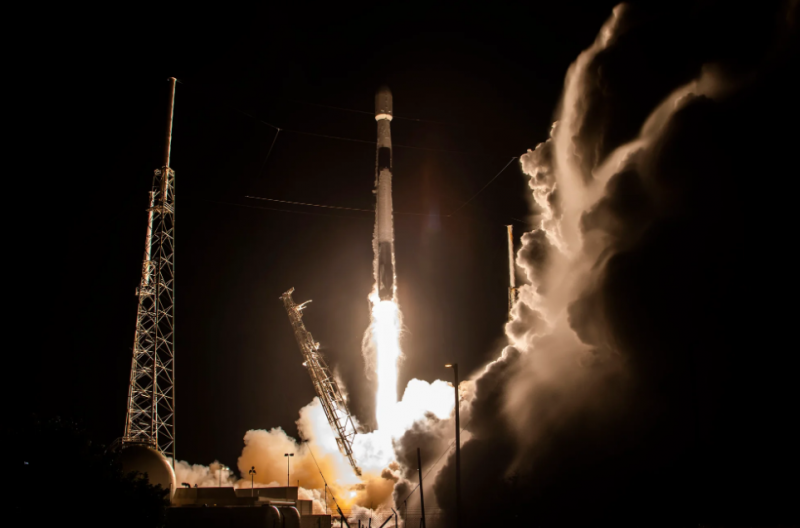
USA: The TEMPO air quality monitoring mission was launched by NASA and SpaceX in cooperation (Tropospheric Emissions Monitoring of Pollution Instrument).
A payload on the commercial communications satellite Intelsat 40E is the Earth observation instrument. It launched on a SpaceX Falcon 9 rocket on April 7 at 12:30am EDT (0:00am IST) from the Florida-based Cape Canaveral Space Force Station.
The Falcon 9 booster successfully landed on SpaceX's drone ship, A Shortfall Of Gravitas, in the Atlantic Ocean about nine minutes after liftoff. It has been verified that, approximately 32.5 minutes after liftoff, the rocket's upper stage successfully deployed the Intelsat 40E satellite.
Also Read: Black hole with weight of 20 million Suns discovered by NASA's Hubble
The first stage of the Falcon 9 made its fourth flight today, making this SpaceX's 23rd launch of the year.
According to NASA, TEMPO is the first space-based instrument to monitor significant air pollutants hourly with a high spatial resolution of roughly 10.3 square kilometres. The entire continental United States will be included in the "region extending from the Atlantic to the Pacific and from the Canadian oil sands to below Mexico City." Ball Aerospace, a business with headquarters in Colorado, constructed the instrument.
Also Read: The ring system of Uranus is captured in exquisite detail by NASA's JWST
TEMPO, which is roughly the size of a dishwasher, will carry out observations in the light spectrums of ultraviolet, visible, and near-infrared. In the lower troposphere, it will be able to pick up pollutants like formaldehyde, nitrogen dioxide, and ozone. TEMPO is expected to operate for much longer than its primary 20-month mission, if necessary. Maxar incorporated it into the Intelsat 40E satellite.
Advanced imaging techniques will be used by TEMPO to gather information on light scattering from sunlight that reflects off Earth's atmosphere at various levels.
According to Dennis Nicks from Ball Aerospace, using this knowledge, the ground teams will be able to convert those light wavelengths into regional concentrations of various air pollutants. But TEMPO is not the first spacecraft to keep an eye on the quality of the air.
There are a number of instruments in orbit operated by NASA and NOAA that gather information on pollution. However, their positioning at the Low Earth Orbit (LEO) is a limitation, say researchers. Only one air quality reading per location per day can be collected at LEO by missions like the Orbiting Carbon Observatories. The fact that these readings are delivered at a set time is another disadvantage.
According to Karen St. Germain, director of NASA's Earth Science Division, instruments at LEO typically take measurements with a lower resolution of 259 square kilometres. There are many changes in the quality of the air throughout the day, and this is where TEMPO would be useful. With a much better resolution of roughly 10.3 square kilometres, the spacecraft will monitor air quality every hour.
Also Read: Finally Twitter has started denying access to its free application programming interface
About 36,000 kilometres above the equator, TEMPO will be located at 91 degrees west in a geostationary orbit (GEO). The Intelsat 40e, meanwhile, is outfitted with two sizable solar arrays to supply power and is designed to last at least 15 years.
According to Kevin Daugherty, project manager of TEMPO at NASA's Langley Research Center in Virginia, "the total cost to NASA is about $210 million." Just over $90 million of that was used to develop the instrument itself.
The remaining funds were used to pay our contractors for hosting TEMPO, integration, as well as some ongoing support engineering and management.